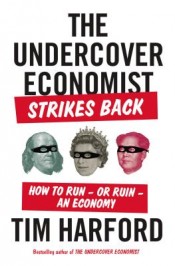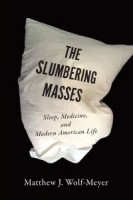Title: The Undercover Economist Strikes Back: How to Run — or Ruin — an Economy
Author: Tim Harford
Genre: Nonfiction
Year: 2014
Publisher: Riverhead Books
Acquired: From the publisher for review consideration
Rating: 




Review: I went to a public liberal arts college, which means I had the opportunity, through my general education requirements, to take classes across a variety of disciplines. Two topics I never managed to learn much about, to my ongoing and persistent regret, are statistics and economics. When I had the chance to snag a review copy of The Undercover Economist Strikes Back by Tim Harford, I jumped at the chance to learn about this topic from a noted expert in the field.
The Undercover Economist Strikes Back is, as the title suggests, is a companion to his first book, The Undercover Economist. That book focused on microeconomics, the study of decisions by individuals and firms. This book focuses on macroeconomics, which looks at the economy as a whole and what decisions can, potentially, steer national and global markets in one direction or another.
(In the interim, Harford has written three other books: The Logic of Life, Dear Undercover Economist and Adapt — all books I’m curious to read after enjoying this one so much.)
The book is framed like a conversation between the reader, posing as a leader looking to “poke around under the hood of our economic system,” and Harford, to find out how macroeconomics work and what might be done to make it work better. It’s a little strange, since the questions the “reader” poses were not always the questions I wanted to ask, but it does help to keep the book conversational and easy to follow — important factors when you’re talking about something as abstract and complicated as the economics of an entire country or planet.
What I liked most about the book, aside from the style, was that I didn’t think Harford was trying to persuade me to support one particular philosophy over another. Different responses (or decisions not to respond) to changes in the economy each have a basis in theory and past performances. The trick, as I understood it, is identifying which situation is applicable and what the best model is to try and tinker with a complicated, difficult to predict system. This section, in a chapter looking at different causes of a recession, illustrates that to me (the bold is the reader, the plain text is Harford’s response):
It feels like what you’re saying is that I should run my economy like a tough bastard right-winter during a boom, and like a bleeding-hear left-winger during a recession.
That’s not such a bad idea. A boom is a great time to trim spending, pay off debt, and try to make markets function better by reducing necessary regulations. These are all right-wing hobby-horses. A recession, however, is a terrible time to do these things. It’s better to keep spending, run up debt and launch big infrastructure projects.
Unfortunately, it seems we tend to get the opposite; in booms, we feel like we can afford to elect left-wing governments to improve labor protection and launch bit public-sector projects, often running up debt in the process; then when trouble hits, we elect right-wing government to slash the deficit, scrap investment projects and make a bonfire of labor protection regulation, all of which simple makes the recession worse.
Sections like that ensured that I finished the book feeling reasonably confident that I’d gotten a good overview of the principles of macroeconomics without bending towards the values of any political party or group — very refreshing. Although I wish I’d started with The Undercover Economist (microeconomics seems more manageable), I learned a lot from reading this book.
Other Reviews:
If you have reviewed this book, please leave a link to the review in the comments and I will add your review to the main post. All I ask is for you to do the same to mine — thanks!


 The Secret World of Sleep by Penelope A. Lewis
The Secret World of Sleep by Penelope A. Lewis Dreamland by David K. Randall
Dreamland by David K. Randall The Slumbering Masses by Matthew J. Wolf-Meyer
The Slumbering Masses by Matthew J. Wolf-Meyer The End of Night by Paul Bogard
The End of Night by Paul Bogard The Secret Life of Sleep by Kat Duff
The Secret Life of Sleep by Kat Duff
 February is my least favorite month of the year. In general, I am not a fan of winter (as anyone who reads this blog for more than a week surely knows), but I have reasons to appreciate every other winter month besides February. In November, the cold weather is new and exciting. In December, there’s the bustle of the holiday season. January is (for me) full of travel and setting new routines. And by March you can usually (usually!) start to see signs of spring coming.
February is my least favorite month of the year. In general, I am not a fan of winter (as anyone who reads this blog for more than a week surely knows), but I have reasons to appreciate every other winter month besides February. In November, the cold weather is new and exciting. In December, there’s the bustle of the holiday season. January is (for me) full of travel and setting new routines. And by March you can usually (usually!) start to see signs of spring coming.